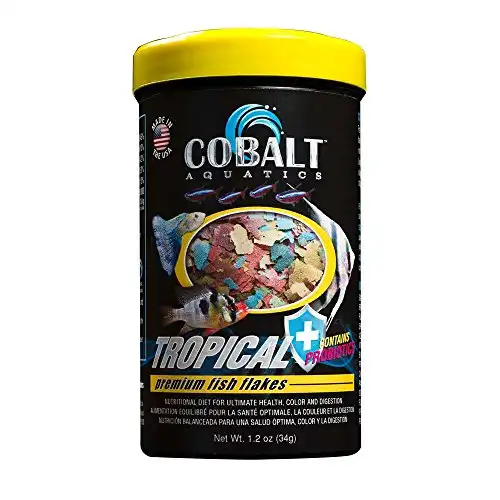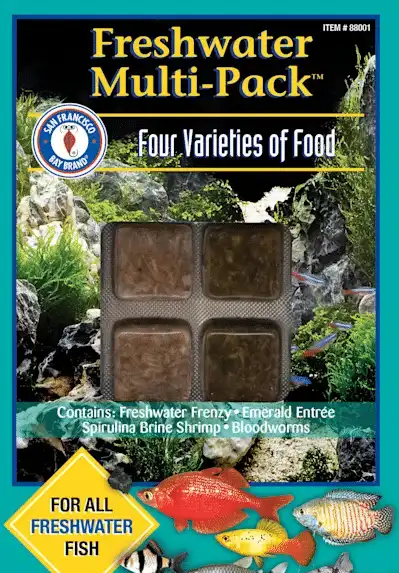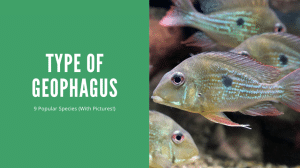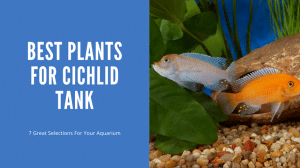Thank you for visiting! By the way… any links on this page that lead to products on Amazon and other stores/partners are affiliate links Aquarium Store Depot earns a commission if you make a purchase.
Fish living in the wild have the freedom to consume anything that can fit their dietary needs. But in the aquarium, they almost always rely on you to stay healthy and happy. This makes fish-keeping even more challenging for beginners.
With over 30,000 fish species discovered1, with each having its own dietary requirements, you need to pay attention to what foods you can feed your fish and how many alternatives can be introduced to their menu.
In this article, I will help you understand different types of fish foods, their benefits, and what species are best to consider for what foods. So make sure you stick around till the end. Let’s learn about what do fish eat exactly and what works best for them!
Key Takeaways
- Fish species are classified into three categories, each with its own dietary needs.
- Every fish species needs nutrients to survive, which they get from a well-balanced diet no matter what category they fall into.
- Fish owners have plenty of options to choose fish food from, given they understand the dietary requirements of their pets.
The Importance Of Feeding Your Aquarium The Right Food
Feeding your fish the right type of fish food is pretty essential, especially when you have different species housed in the same tank.
All species, regardless of where they come from, need a nutrient-rich diet. Some fish species get these nutrients from vegetable matter, while others need meaty foods to stay healthy.

And like humans, fish also need a well-rounded combination of proteins, fats, minerals, and vitamins in their food so that they can survive against all odds and have better lifespans. And in case you don’t know, fish can be picky eaters, too. Some fish prefer a plant-based diet, while other fish love to hunt down live prey.
In their natural habitat, they are privileged to decide what they want to eat. But since they don’t have this option in captivity, the responsibility of providing them with a balanced diet falls on your shoulders.
If you know where your fish comes from and what they are accustomed to eating in the wild, the process of choosing the right food will be easier and faster.
Some fish species are found living in the depths, while others colonize the surface areas. Some species are freshwater fish, whereas others can be saltwater species. Their origin, as well as where they live in the water areas, determine the type of food they need.
Fish diets can generally be broken into three different categories, which we are going to cover in the next part.
Remember that if you know what category your fish fall into, you can easily design their menu according to their needs.
Different Types Of Diets
With different species known across the world, the change in their dietary needs is common and therefore necessary to get familiar with.
You can generally classify your fish’s diet into three categories: Carnivorous, Herbivorous and Omnivorous.
Let’s talk about each of them in more detail!
Herbivores
The first category on this list is Herbivorous fish.
These fish get most of their nutrients from a plant-based diet. They can munch on algae or eat vegetable matter to stay healthy and active. In the wild, herbivorous fish get plenty of food options to choose from. Apart from algae and plant matter, you can supplement your pet with fruits for better growth in your home aquarium.
Fish that fall into this category often have flat teeth or a beak that helps them bring off algae from rocks, wood, substrate, or other areas where they can find algae. These fish usually graze on areas with grown algae throughout the day and night.

There are only a few named species that survive only on a plant-based diet because most species need a well-balanced diet of meaty foods and vegetables. You cannot feed them meat since they won’t be able to digest it.
Compared to other types, Herbivorous fish can be challenging to keep because of their dietary needs. You need to supplement their tank with an abundant amount of food to graze on. Sometimes meeting their needs becomes pretty difficult, which can starve the fish to death. Luckily, there are options you can consider to avoid any mishap (more on that).
Some common herbivorous fish include:
- Tangs
- Plecos
- Blennies
- Otocinclus catfish
Carnivores
Carnivorous fish can also be called predatory fish that drive their energy from a meat-based diet. In the wild, they chase down smaller fish, insects, worms, snails, and shrimp. You can find fish like sharks actively hunting for live foods. On the other hand, other fish from the same category prefer sitting perfectly calm, waiting for their prey to become their next meal.
Carnivorous fish feature bigger mouths, larger teeth, and aerodynamic bodies that help them with rapid swimming through water.
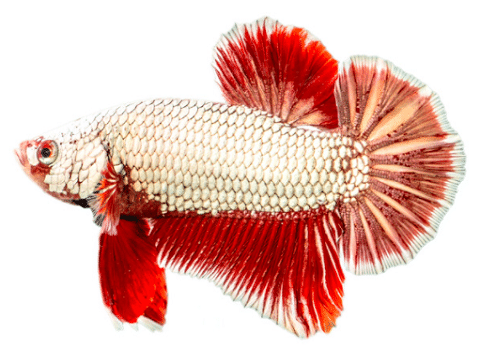
In the aquarium hobby, it’s unlikely to find a fish owner housing Carnivorous fish since these species have a very predatory nature. Carnivorous fish enjoy tearing apart their prey and swallowing them instead of chewing on their meals.
Some carnivores would include:
- Bettas
- Angelfish
- Clown Loaches
- Freshwater eels
- Predatory Cichlids like Oscars
Omnivores
Unlike those species that fall into the previous categories, Omnivorous fish have a solid digestive tract and offer you a wide range of options to consider when it comes to feeding them. They have a digestive system that allows both plant matter and meat to travel through, making them a pretty easy pet to care for.
Fulfilling their nutritional requirements is pretty simple as long as you feed them a varied diet of vegetables and meat.
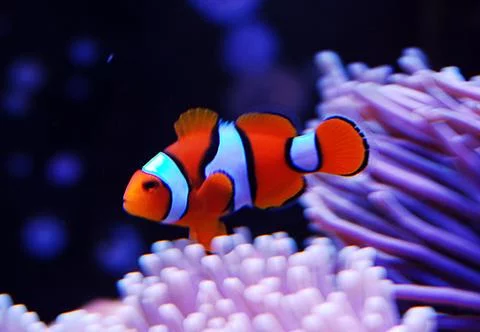
And for a good reason, you are more likely to see Omnivorous fish in your local pet store than Herbivorous or Carnivorous fish.
Though these fish are a common type to find, you can come across some species that are more inclined towards either meaty foods or greens. The best way to find that out beforehand is to research their natural environment and the diet they consume in the wild.
Some common fish in this category include:
What Do They Eat?
Before you go and bring home a new pet, it’s always recommended to know the biology, size, and environment of the fish.
Fish are extremely diverse, which makes their dietary needs different from one another. Fish that are Carnivorous can eat live food, such as other young fish. And as far as the herbivorous category is concerned, they love to eat plants and spend their whole lives eating only that. Fish that are omnivores can take both vegetable and meaty foods as their main diet.
To get you started, I’ve listed out some common types of fish food suitable for different types of fish.
Dried Food
Dried fish food is one of the most common and convenient options to consider for your pet’s diet.
Apart from being cheap and easily available, dried food offers a range of options for carnivores, herbivores, and omnivore fish. And not only that, but when stored properly, this can last for several years. So it doesn’t matter if your fish wants to have insects, plants, or both.
There are different types of dried foods available in almost every pet store. Let’s dive into that!
Flakes
If you have top and mid-feeding fish, then flakes are for you.
Flake foods are small pieces of paper-thin fish food that float on the surface from where mid-dwellers and surface feeders can effortlessly consume them.
Best Tropical Fish Flake Food
Cobalt offers a premium level flake food with probiotics. A color enhancing formula that works great for all tropical fish
You can find some specific kinds of dried flakes perfect for fish like goldfish. Apart from this, there are different varieties that can give you the freedom to go for enhancing the color of your fish.
The size of dried flakes doesn’t have to coexist with the size of your pet since you can crush them into smaller bits and then feed them to your pet.
The main downside to flakes is that as soon as they get into the water, they begin losing their nutrients. They will dissolve in the water, and that’s why I don’t recommend you feed them to your bottom feeders.
Pellets
Giving your fish floating pellets is another great option, especially when you want to keep every fish in your aquarium happy doesn’t matter where they live.
Pellets, like flakes, are dried food that is made with different ingredients to target a specific diet.
Typically, you will see three different types of pellets.
The number one type is floating pellets that stay on the surface and transcend other types of fish food in size. Since they contain lots of air to stay afloat, some fish can potentially go through bloating or buoyancy issues, depending on what brand you’re using.
A coral and fish food all in the same package. Highly nutritious and fish love it. Works great in auto feeders
The second type is slow-sinking pellets. These pellets are designed to target the appetite of mid-dwellers who are too shy to eat up their food. As for the size, these pellets come in different sizes, so you can find the one that best suits the size of your fish’s mouth.
The third and last type is fast-sinking pellets. These pellets quickly sink down to the bottom for bottom-dwelling fish to feast on. Unlike the other two types, fast-sinking pellets contain the most nutrients and make a perfect meal for fish like plecos.
Wafers
Wafers are another type of dry fish food that comes in both large and small sizes. They take time to dissolve and therefore are perfect for your slow-feeder fish to devour.
Wafers become gradually soft in the water and can be eaten either by breaking up or by nibbling on them.
Herbivore fish can be fed algae wafers to fulfill their need since finding grown algae on a frequent basis is not possible for your pet.
Algae wafers are a great way to directly feed your bottom feeding fish. They are especially effective for larger fish like plecos
Freeze-dried foods
Though less in protein as compared to fresh or frozen food, freeze-dried food is still a fine option for fish owners.
Typically freeze-dried food is something that was once alive but has been freeze-dried. It can include shrimp or worms and is usually given to those fish that need protein-rich foods.
Aside from worms and brine shrimp, you can freeze-dry daphnia, bloodworms, tubifex, and krill.
Daphnia is a great food source for fish. Comes multi-vitamin enhanced and easy to feed.
The good thing about freeze-dried food is that it can outlive other foods and can easily fit in the mouths of smaller fish species.
Live Foods
If you’re a beginner, then fetching live food for your fish will be pretty demanding. Except for live feeder fish and ghost shrimp, it’s like an enterprise to get live food for your pet fish.
Live foods are rich in nutrients, but they can turn your freshwater aquarium into a disease center for your pet fish. You can buy bloodworms, feeder fish, and ghost shrimp from any local fish store, where you can find plenty of live foods that have been farmed specifically for this purpose.
But in case you don’t want to run to the store every time you run out of supply, you can grow mosquito larvae at home to feed your fish. Just make sure you get a fresh supply available.
Since live foods can introduce tons of diseases to home aquariums and to your fish, I recommend going for frozen food. Culturing live food is a better venture for an aquarist with more experience (and who doesn’t mind getting messy).
Frozen Foods
fish food Frozen fish food is typically fish, shrimp, or other crustaceans frozen into cubes. Unlike live foods, frozen food is superior in quality and can become a nutrient-rich diet for your fish.
At the time of feeding, just drop the cube into the aquarium and let your little pet enjoy the feast.
This frozen food pack contains 4 types of formulas in one package. A great overall package for freshwater fish
Frozen foods can live longer than live foods when properly stored in a freezer. They are easily available online and at local fish stores. If you are a beginner and measuring servings is hard for you, then you can use these cubes to ensure you are not overfeeding your pets.
FAQs
What Is Their Main Food?
The main food of the fish depends on the category they fall into. For carnivores and omnivores, smaller fish, insects, worms, and snails are the main source of food whereas herbivores eat plants.
What Do They Eat In The Ocean?
The diet of an ocean fish can vary depending on the category. Herbivorous fish eats algae while omnivores and carnivores can feast on shrimp, plankton, and crustaceans.
Closing Thoughts
Different types of fish have different dietary needs, which can be met by a variety of food options. It’s important to know what type of diet your fish requires and the foods that fit them best in order to ensure they’re getting the nutrients they need. Have you tried any new fish food products for your pets lately? Let us know about your experiences in the comments below!


